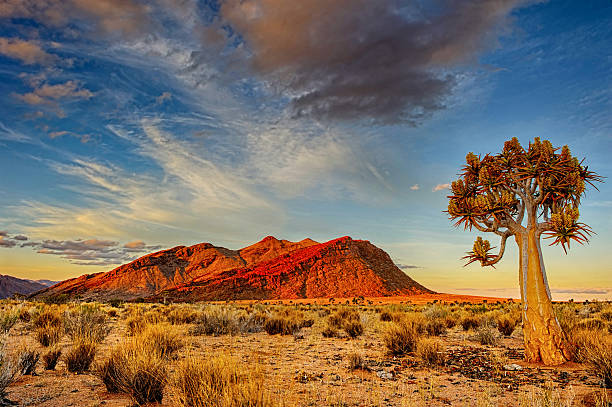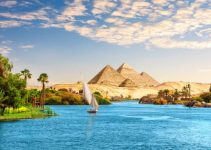You’ve booked your Kalahari getaway, and the excitement is building. The kids are counting down the days, and you’re already picturing yourself floating down the lazy river with a drink in hand.
But here’s what happens to most families: they arrive at the resort, get settled into their room, and then realize they forgot half the stuff that would’ve made their trip ten times better. Suddenly, you’re making emergency runs to the gift shop, paying triple for things you could’ve packed at home.
Your Kalahari experience doesn’t have to start with stress or extra spending. Pack smart, and you’ll spend less time worrying and more time actually enjoying everything this massive waterpark resort has to offer.

Things to Take with You to Kalahari
Getting your packing right means the difference between a smooth, fun-filled vacation and one where you’re constantly running back to your room or hunting down items you need. Here’s what seasoned Kalahari visitors never leave home without.
1. Reusable Water Bottles for Everyone
Listen, you’re going to be doing a lot of walking, swimming, and sweating at Kalahari. The resort is huge—we’re talking over 200,000 square feet of waterpark space in some locations—and staying hydrated isn’t optional, it’s essential.
Here’s the thing about resort beverages: they add up fast. A bottle of water from the snack bars can cost you $4 or $5 each time. Multiply that by four family members drinking three bottles a day over a three-day trip, and you’re looking at an extra $150+ just on water. That’s money you could spend on arcade games or a nice dinner.
Bring your own reusable bottles and fill them at water fountains throughout the resort. Most Kalahari locations have bottle-filling stations that make this super easy. Your kids can clip their bottles to their bags, you can toss yours in a tote, and everyone stays hydrated without the constant expense. Plus, you’re doing something good for the environment while you’re at it.
2. Waterproof Phone Case or Pouch
You know those perfect moments—your daughter going down the FlowRider for the first time, your son’s face when he sees the massive tipping bucket, that rare family photo where everyone’s actually smiling? You want to capture them.
The problem is that phones and water don’t mix. At all. Leave your phone in the room and you’ll miss those memories. Carry it around unprotected and you’re one splash away from a $1,000 replacement.
A waterproof pouch solves this completely. Get one that floats (seriously, this matters) and has a clear touchscreen-responsive front so you can still take photos and videos without removing your phone. Test it before you go by sealing it with a tissue inside and submerging it in your sink. If the tissue stays dry, you’re good to go. These pouches cost around $10 to $20 and can save you from a vacation-ruining disaster. You can wear it around your neck or clip it to your swimsuit, keeping your hands free for actually having fun.
3. Quick-Dry Towels or Extra Beach Towels
Kalahari provides towels for the waterpark. That’s great. But here’s what they don’t tell you: those towels stay with the waterpark.
What this means is that when you head back to your room soaking wet after an afternoon of slides, you don’t have a towel situation figured out. The bathroom towels are for showers. The waterpark towels need to be returned. You’re standing there dripping on the carpet, and nobody’s happy.
Bringing your own quick-dry towels gives you flexibility. These microfiber ones fold up small, dry in minutes, and work for everything from wrapping up wet swimsuits to laying on the floor during movie time. Some families bring one per person. Others bring extras because kids have this magical ability to use seventeen towels in one day.
If quick-dry isn’t your style, regular beach towels work too. They take up more space in your luggage, but they’re familiar and comfortable. Either way, having your own towels means you control your comfort level throughout your stay.
4. A Solid Waterproof Bag
You need somewhere to stash your stuff while you’re in the waterpark. Room keys, sunscreen, phones, snacks, that toy your toddler absolutely cannot be separated from—it all needs a home.
The locker rental route costs you about $10 to $15 per day, and you’re constantly walking back and forth to access your things. A waterproof bag that you can keep poolside makes life so much easier. Get one that zips or rolls shut at the top to keep water out. The best ones have external pockets for things you need to grab quickly and internal pockets for valuables.
One trick that works really well: use a brightly colored bag. When you’re ready to leave the wave pool and you’re scanning the pool deck for your stuff among hundreds of other bags and piles of towels, that neon orange or bright yellow bag stands out immediately. You’re not wandering around squinting at every navy blue bag, wondering if it’s yours.
5. Swim Diapers and Regular Diapers
If you’re traveling with little ones who aren’t potty-trained yet, this one’s non-negotiable. Kalahari requires swim diapers in all water areas, and they’re serious about enforcing it. Regular diapers absorb water, swell up, and fall apart. Swim diapers are designed to contain what needs containing while letting water flow through.
Here’s where parents often mess up: they pack swim diapers but forget that babies and toddlers still need regular diapers for the other 18 hours of the day when they’re not in the water. You’re going to go through more diapers than usual because of all the changing in and out of wet clothes, extra baths, and general excitement that throws off normal routines.
Pack at least 30% more diapers than you think you’ll need. Yes, the gift shop sells them. No, you don’t want to pay gift shop prices. A pack that costs you $12 at home might run $25 at the resort. Do the math based on your trip length and toss in a few extras. Your future self will thank you.
6. Reef-Safe Sunscreen
The waterpark is indoors, so you don’t need sunscreen there. But most Kalahari resorts also have outdoor areas, and if you’re visiting the Poconos or Wisconsin Dells locations, you might venture out to explore. Even indoor lighting and the general activity level mean that protecting your skin matters.
Why reef-safe specifically? Traditional sunscreens contain chemicals that can damage aquatic systems. Kalahari’s water treatment systems handle a lot, but using reef-safe options is better for everyone. Look for mineral-based formulas with zinc oxide or titanium dioxide.
Apply it before you leave your room in the morning. Reapply every two hours if you’re in outdoor areas. Kids need special attention because they’re constantly in and out of water, rubbing their faces, and generally making a mess of any sunscreen you carefully applied ten minutes ago. Bring the stick version for faces—it’s easier to reapply and less likely to get in the eyes.
7. Snacks
This is where you can save serious money. Resort food is convenient but expensive. A family of four can easily drop $80 on lunch without trying hard. Multiply that by three meals a day over a few days, and your food budget might exceed your room cost.
Kalahari allows you to bring in your own food. This is huge. Pack a cooler or insulated bag with sandwiches, fruit, crackers, granola bars, and whatever your family actually eats. Keep it in your room and make it a base camp for meals and snacks.
You don’t have to skip resort dining entirely. Maybe you do breakfast in the room, grab lunch at the resort, and then dinner back in the room. Or vice versa. The point is having options that don’t require spending $12 on a kids’ chicken tender basket every time someone says they’re hungry.
Good snack choices: string cheese, apple slices, pretzels, trail mix, beef jerky, fruit pouches. Things that don’t need refrigeration work best, though most rooms have mini-fridges. Avoid anything that melts, gets soggy, or requires elaborate preparation. You’re on vacation. Keep it simple.
8. Change of Clothes in Your Day Bag
Picture this: your kid has an accident. Or spills an entire smoothie down their front. Or decides to cannonball into the shallow pool while fully dressed because they’re four and logic isn’t their strong suit yet.
Having a change of clothes immediately accessible saves you from marching everyone back to the room, getting them changed, and then making the trek back to wherever you were. At Kalahari, that could be a 10-minute walk each way, plus elevator waits, plus actually getting everyone changed. There goes 45 minutes of your day.
Pack one complete outfit per kid in your day bag. Include underwear, socks if needed, and a shirt and shorts or pants. For yourself, at minimum, bring a dry shirt. You can probably tolerate damp shorts for a while, but a soaking wet shirt is miserable.
This also comes in handy when the waterpark gets cold (yes, even indoor waterparks can feel chilly) and your kid wants to warm up but isn’t ready to be done for the day. Dry clothes for an hour in the arcade or at lunch can reset their comfort level completely.
9. Water Shoes for the Whole Family
The floors at Kalahari stay wet. Constantly. Hundreds of people walking around, dripping water all day, means slick surfaces everywhere. Regular flip-flops are a slip hazard. Going barefoot means your feet take a beating on rough concrete and you’re vulnerable to stubbed toes.
Water shoes solve both problems. They grip wet surfaces better, protect your feet, and dry quickly. Your kids can run around more safely (well, as safely as kids ever run). You can walk confidently without that careful shuffle you do in regular sandals on wet floors.
Get ones that fit snugly. Loose water shoes create blisters just as badly as regular shoes that don’t fit right. The mesh-style ones with rubber soles work great because they let water drain out immediately. Some people prefer the closed-toe versions for extra protection. Either works as long as they’re designed for water use.
One unexpected benefit: water shoes mean you’re not constantly losing track of footwear. Flip-flops fall off on slides, get kicked into pools, and generally vanish. Water shoes stay put. Less time hunting for missing shoes means more time having fun.
10. A Power Strip with USB Ports
Hotel rooms never have enough outlets where you need them. Kalahari rooms are better than average, but you’re still looking at maybe four accessible outlets total. Meanwhile, you’ve got phones, tablets, portable chargers, cameras, and possibly a white noise machine or nightlight for the kids.
A compact power strip with USB ports fixes this instantly. Get one with at least four outlets and two USB ports. You can set it up on the nightstand or desk and charge everything overnight in one spot. No fighting over who gets to charge their device. No unplugging the alarm clock to charge a phone.
The USB ports are clutch because most phone chargers these days are just cables. You can plug multiple devices into the USB ports without using up the outlets, leaving those free for things that need the actual plug-in adapters.
Make sure you get one with surge protection. It’s a small thing, but it protects your expensive electronics from power fluctuations. Pack it near the top of your bag so you can set it up as soon as you arrive and start charging anything that got low during travel.
Wrapping Up
Your Kalahari trip is supposed to be fun, and it absolutely can be. Getting your packing right means fewer headaches, less money spent on overpriced convenience items, and more time actually enjoying the experience you paid for.
The families who have the best time are the ones who prepare for the realities of a waterpark resort vacation. They stay hydrated, keep their valuables safe, have backup clothes ready, and don’t stress about the small stuff because they planned. That can be your family, too.
Pack these ten things, double-check your reservation details, and get ready to make some memories. Your perfectly planned Kalahari adventure starts now.


